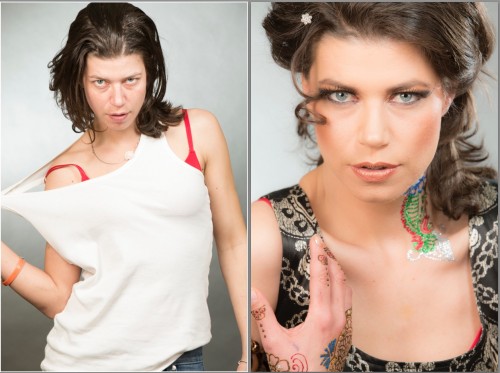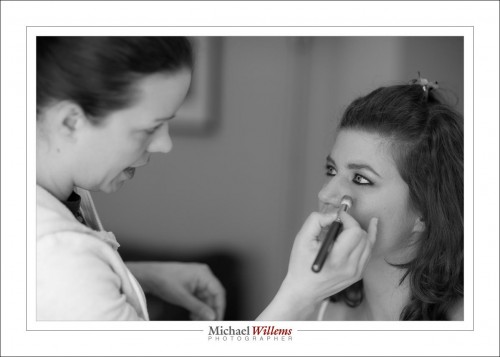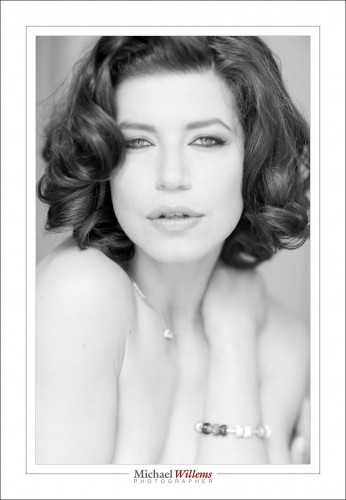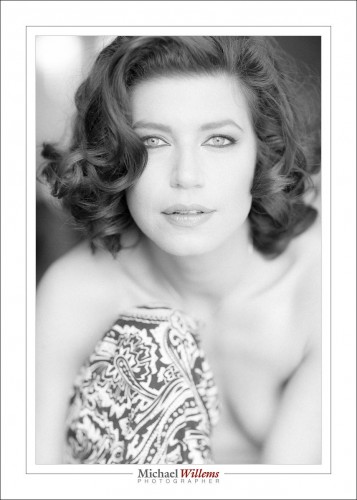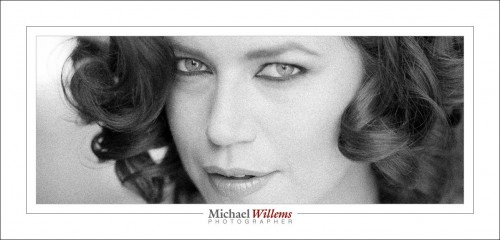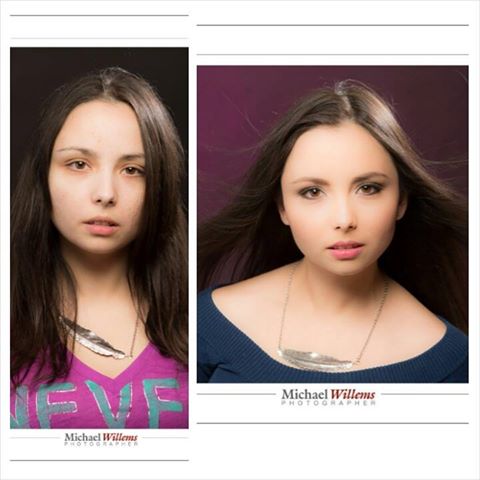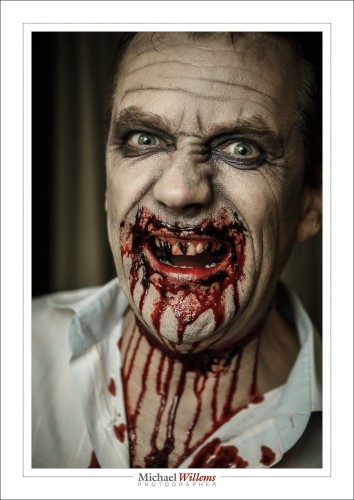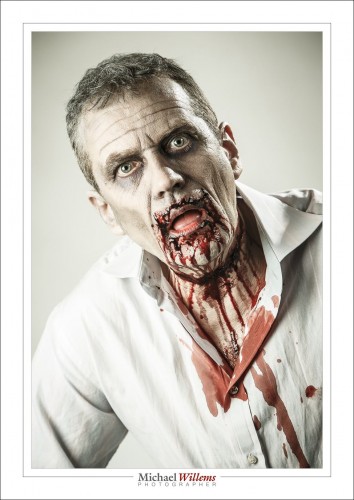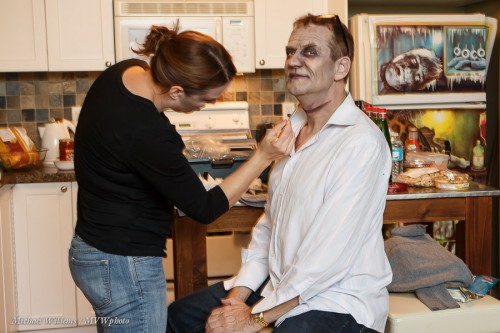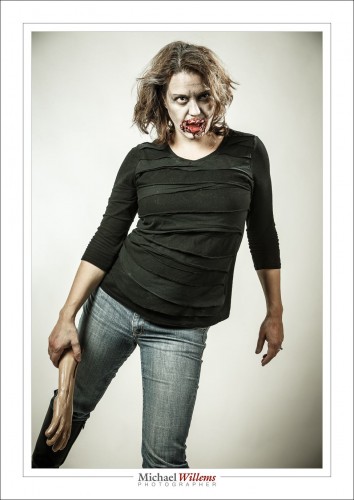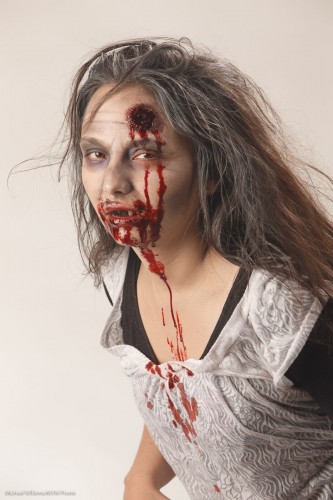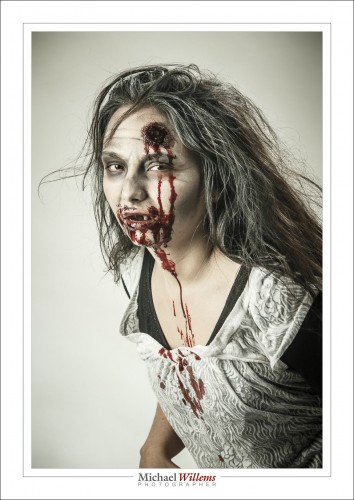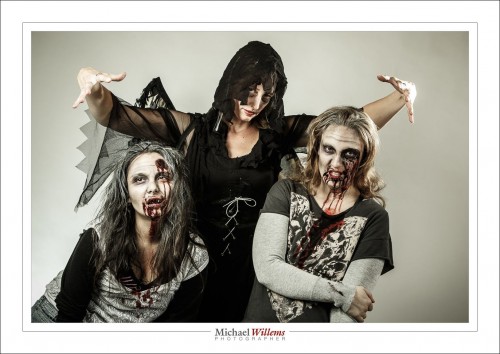Why do photographers need a make-up artist (a “MUA”) at a shoot? What does a make-up artist do? I thought that might be worth a few words today.
First of all, a make-up artist does make-up. D’oh.
Make-up is important for everyone – ask a TV producer: who ever appears under the cameras without make-up? Almost no-one. Richard Nixon lost an election because of his unkempt appearance.
Right, Michael. But surely young models, who are not Richard Nixon, do not need make-up? Right?
Sure they do. Even Angelina Jolie (or fill in your dream person).
Let me illustrate that.
Below, Angelina’s skin photographed close-up with a modern DSLR and a 100mm lens:

Not Angelina. Photo Michael Willems
Okay, maybe that is not Angelina’s skin, but you get the idea. No-one is perfect – people are people. Young and old, male and female: we all have pores, freckles, blemishes. Young models are, well, young, so they also have acne. The dream angels you see in Vogue have been photoshopped. They’re called “dream” for a reason.
So that is one reason you need a MUA: to fix flaws. So that the photographer does not have to spend hours in Photoshop or Lightroom “fixing” them.
And then the MUA does hair. Straighten, brush, whatever it needs: the MUA knows, and keeps a look out during a shoot.
Once all that is done, a very important function is to match the mood with the look. A good MUA knows how to do this. And to match the make-up and hair with the outfit: this too is very important. The MUA talks to the creative director and the photographer, and helps create the perfect look.
A further reason is to help with things in general. A shoot is always hectic and an extra pair of hands is great. And an extra pair of eyes. Runny eye shadow? Non-glossy lipstick? Hair in the way? The MUA keeps a close lookout for these things.
I would say that the final reason is one of the most important: a good MUA makes the model (male or female, young or old) feel good about themselves, and confident in their abilities. Feel great, feel beautiful, feel like a million dollars – and that translates to looking great.
To illustrate all that, here’s one more shot from Sunday’s workshop:
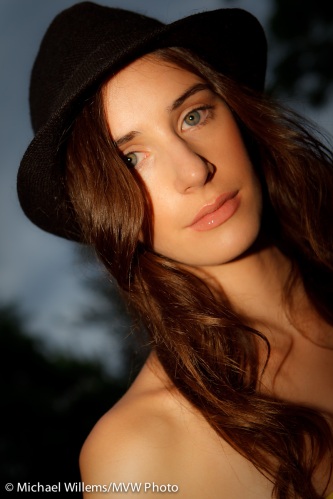
Evanna Mills (photo Michael Willems, Make-up Liz Valente)
Side note: I have been asked why we use young women as models in the workshops. Do we just like photographing young women?
Sure we do. But you would be surprised how little the photographer actually cares about the type of things he shoots. That is, you can have the same amount of fun shooting women or men, young or old; shooting jewelery or forests, shooting products or buildings. Old men are just as great as young women, creatively speaking. But models, most of whom are young women, are a good choice for several reasons.
One: they get paid to be there and they are very patient. Two: they have infinite energy. Posing all day takes it out of you. And three: they know how to pose for the camera. Finally, most importantly, they are not afraid. A good model is unselfconscious and will not worry for each shot how they look.
And the MUA reinforces that confidence.

